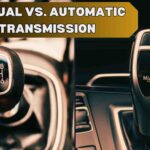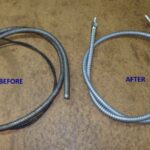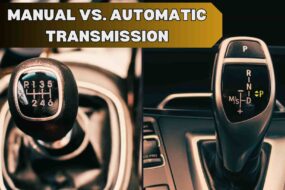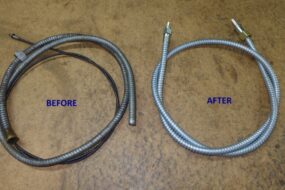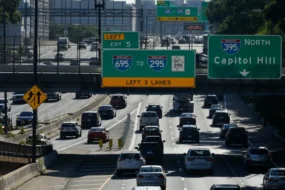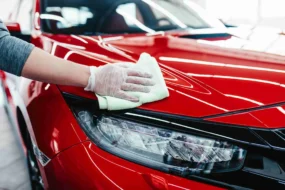A simple light unit is one mounted individually on the bodywork. Depending on the model of car it can include indicators, side repeaters, sidelights, front and rear fog lights, reversing lights and even the main headlights and rear lights.
It is essential to keep your car lights in good working order all the time. Apart from being dangerous, a defective light may also be illegal. If you do find a defective light unit, and you know the bulb is not at fault, the problem
may lie in the light unit itself.
On most modern cars the light units are combined into clusters, but on older cars they are often fitted singly or in pairs and have the advantage of being cheaper to replace. This sheet looks at these simple units. Clusters are
covered in Bodywork S9 and 60.
Numberplate lights
Numberplatelights
Number plate lights are commonly fitted to the rear bumper.
Illumination for the rear number plate is a legal requirement, though the location of the bulb differs between different models. Common fitting positions include the rear bumper (below), the side of the number plate or the bodywork. Removing a number plate light is basically much the same as for other light units. The light housing surrounding the bulb may have the lens built into it and be simply removed by releasing its securing screws.
Other units may simply clip on to the bumper as a complete unit with a separate feed and earth wire. This type is removed simply by prising it out with a screwdriver —take care not to damage the chrome or paintwork when doing this.
Removing a simple light unit
Remove the lens by releasing the fastenings with a screwdriver. Take care when doing this as it may be stuck to its mounting and need prising off with a screwdriver.
Pull out the sealing gasket from behind the lens. Take care not to tear it as it may have deteriorated if it has not been removed for a long time.
To remove the bulbholder plate, unscrew the securing bolts or screws taking care not to damage the reflective silvering.
Pull the bulbholder forward enough so you can reach the wiring behind. Pull off the multi-plug connector or individual wires labelling them for easy reassembly.
Removing lenses
The lenses are most commonly held from the outside. by small screws and can be removed with a suitable size screwdriver. Other types are secured from the rear and you may have to remove trim panels on the inside to gain access to them. Once you can see the rear of the light unit look carefully to find how the lens is fixed. You may have to remove the bulbholder first (see below)
before you can remove the lens fixings.
Release the lens fastenings and lift the lens away. Check the condition of the lens. If it is cracked you will need to buy a new one from your dealer. Some lenses are made up of individual sections which are slotted together. With
this type you can often replace just the broken section.
Clean away any dirt, grime and condensation that has accumulated on the
inside of the lens.
Checking holders
As with the lenses the bulbholders can be removed either from the front of
the light unit or from the rear.
Disconnect any wiring to the bulb-holders by pulling off the multi-plug connector. If individual wires are fitted, make a note of which wires fit to
which terminals to help with reassembly.
Check to see how the holders are fitted to your car. They may be held with small screws or clips, or they may screw out completely with the bulb still in place. Some small indicator repeater bulbholders are removed complete with
their wiring and have to be disconnected away from the light unit.
When the bulbholder has been removed check for any corrosion on the wiring terminals or inside the bulbholder. The bulb is often earthed through the holder securing screw so make sure this is free of corrosion, both on the
holder and where it attaches to the body.
Clean any corrosion with wet-ordry paper and spray some penetrating oil into it to prevent further deterioration. If the bulbholder is badly rusted, you
should replace it with a new one.
Unless they are part of a cluster, headlights can be repaired in much the same way as other simple light units, with the exception of sealed beam
units which have to be replaced whole.
The headlights may be screwed, bolted or clipped to the body. To remove
and refit the headlights.
Mini indicator lenses
The lenses fitted to the BL Mini are dome-shaped and fit into a rubber seal on the baseplate of the light. The lens is held firmly with a trim
ring which fits over the outer edge of the lens and seal.
To remove the lens carefully prise the trim ring away with a screwdriver
then pull the lens out of the seal.
To replace the lens hook the lip of the lens into the seal and work it over the edge of the lens until it is properly seated all the way round. Replace the trim ring, making sure it is pushed firmly into position over
both the seal and the lens.
Some bulbholders use a small spring to push the feed wire into contact with the base of the bulb. Remove the bulb and check the contact inside the holder
for corrosion. Clean it up if necessary.
With this type of holder a loose fitting bulb could be due to a weak spring. Pull the wire and contact right out of the holder to reveal the small spring behind it. Stretch the spring with two long-nosed pliers to retension it. If the bulbholders have a separate earth wire check that its connections are clean
and tight.
Reflectors
If your lights seemed to be dull the cause could be a tarnished reflector
around the bulb.
The reflector may be integral with the bulbholder or mounted separately on the light unit baseplate. To remove the baseplate release the securing screws or nuts and lift it away – remember that it may be attached to an earth wire
which you will have to remove.
Carefully scrape away any corrosion on the reflector with a screwdriver,
then gently polish up the surface with metal polish.
Lens gasket
A broken lens gasket can cause water to enter the light unit, leading to corrosion and condensation. Inspect the lens gasket to make sure it is intact.
If broken or perishing it should be replaced.
If you cannot buy a new gasket you can repair the old one with a small
amount of sealing mastic.

